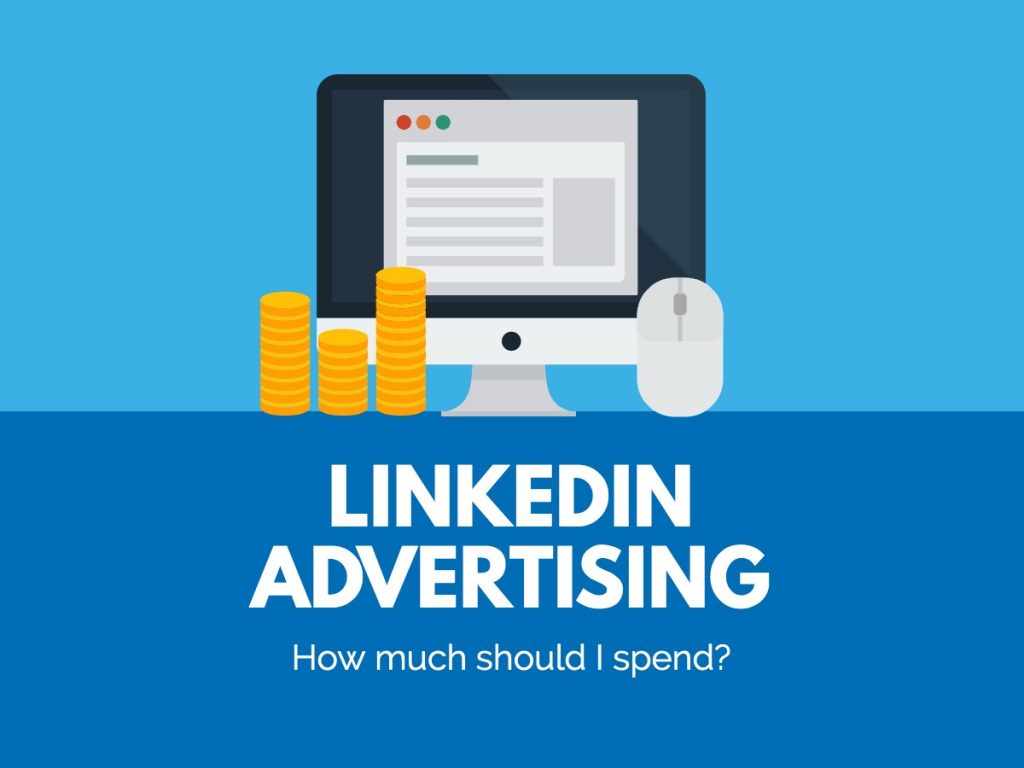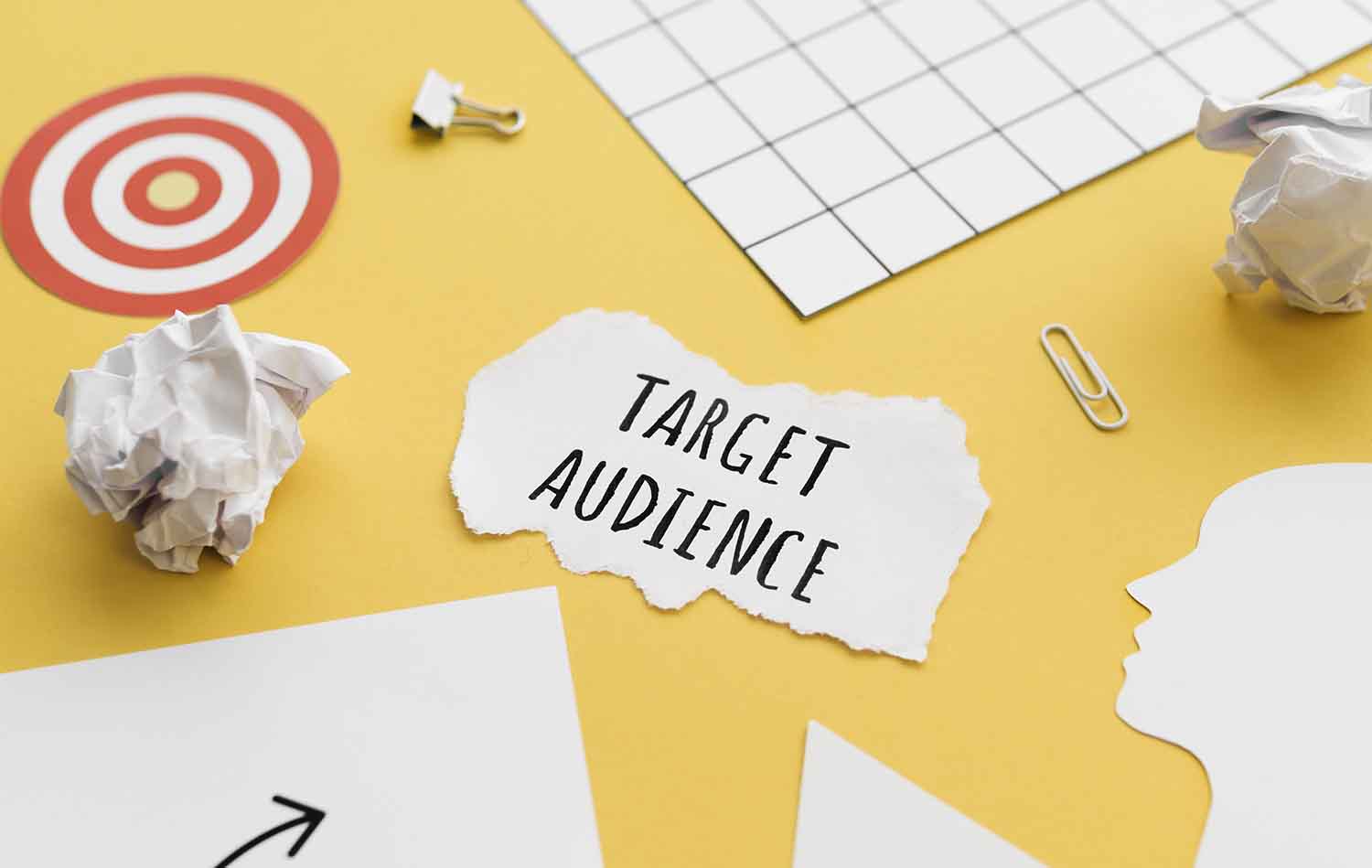Introduction to LinkedIn Ads
In today's digital age, social media platforms have become powerful marketing tools for businesses to reach their target audience effectively. Among these platforms, LinkedIn stands out as the leading professional networking site, providing a unique opportunity for businesses to connect with professionals and decision-makers in various industries.
LinkedIn Ads offers a diverse range of ad formats, targeting options, and analytics to help businesses achieve their marketing objectives. Whether it's increasing brand awareness, driving website traffic, generating leads, or recruiting top talent, LinkedIn provides the tools to create compelling and impactful advertising campaigns.
Also Read This: Commercial Ventures: Using Flaticon with Confidence
Setting the Foundation: Understanding LinkedIn's Advertising Auction
In the realm of digital marketing, the ability to reach the right audience at the right time is paramount. LinkedIn, the world's largest professional networking platform, offers businesses a powerful advertising solution to connect with their target audience in a professional context. At the core of LinkedIn's advertising ecosystem lies its unique auction system, a dynamic process that determines which ads are shown to specific users based on relevance, bid amounts, and other key factors.
A. Explanation of the LinkedIn Ads auction system
LinkedIn's advertising auction functions as an automated real-time bidding process. When a LinkedIn user matches the targeting criteria set by an advertiser, an auction is triggered, allowing multiple advertisers to compete for the ad placement opportunity. However, winning the auction is not solely determined by the highest bid; LinkedIn takes into account various factors to ensure that users are presented with relevant and engaging content.
B. Factors influencing ad costs on LinkedIn
The cost of running LinkedIn ads is influenced by a combination of bid amounts and the overall quality and relevance of the ads. Advertisers must consider the bid strategy, the specificity of their audience targeting, and the historical performance of their ads. Additionally, LinkedIn assesses the ad's engagement metrics, such as the click-through rate (CTR) and user interactions, to gauge its relevance to the target audience.
C. Key terms: CPM, CPC, CTR, and other relevant metrics
To navigate the world of LinkedIn's advertising auction effectively, marketers need to be familiar with key metrics and terminology. We'll cover essential metrics like Cost per Mille (CPM), Cost per Click (CPC), Click-through Rate (CTR), and other relevant terms crucial to understanding ad performance and optimizing costs.
As we delve into the intricacies of LinkedIn's advertising auction, marketers will gain valuable insights into creating successful campaigns that resonate with their audience while keeping ad costs under control. Let's embark on this journey to unlock the secrets of LinkedIn Ads and empower your marketing efforts on this professional networking platform.

Also Read This: Adobe Stock vs iStock: Which is the better option for your creative projects?
Types of LinkedIn Ads and Their Average Costs
LinkedIn offers a variety of ad formats, each designed to cater to specific marketing objectives and audience engagement. Understanding the different types of LinkedIn ads and their average costs can help businesses tailor their advertising strategies to achieve optimal results.
| Ad Type | Description and Format | Average Cost Comparison |
|---|---|---|
| Sponsored Content Ads | Appear directly in the LinkedIn feed as native content. Blend seamlessly with organic posts, providing advertisers an opportunity to share engaging stories, articles, videos, or promotional content with their target audience. | CPC: $6-9 |
| Sponsored InMail Ads | Personalized messages sent directly to the LinkedIn inbox of targeted users. These ads offer a more direct and personalized approach to engage with prospects. | CPS: $0.80-1.00 |
| Display Ads (Follower Ads and Spotlight Ads) | Display ads on LinkedIn are shown on the right-hand side of the LinkedIn desktop interface. Follower Ads aim to increase a company's followers, while Spotlight Ads promote specific content or events. | CPC: $2-4 |
| Video Ads | Video ads on LinkedIn allow advertisers to tell their brand's story through captivating videos. These ads appear as sponsored content and autoplay as users scroll through their feeds. | CPV: $0.06-0.12 |
This video explains about types of LinkedIn ads:
Also Read This: Breaking Free: A Guide on How to Cancel Adobe Stock
Industry-Specific Insights on LinkedIn Ad Costs
LinkedIn's advertising costs can vary significantly across industries due to differences in competition, audience size, and demand. Understanding industry-specific insights on LinkedIn ad costs can help businesses set realistic budgets and tailor their strategies for optimal results.
A. Average Cost Variations Across Industries
- Technology and Software:
- Sponsored Content: $7 to $11 (CPC) | $9 to $13 (CPM)
- Sponsored InMail: $0.90 to $1.20 (Cost per Send)
- Display Ads: $2.50 to $4.50 (CPC) for Follower Ads | $5 to $7 (CPC) for Spotlight Ads
- Video Ads: $0.08 to $0.14 (Cost per View)
- Finance and Banking:
- Sponsored Content: $6 to $10 (CPC) | $8 to $12 (CPM)
- Sponsored InMail: $0.80 to $1.10 (Cost per Send)
- Display Ads: $2 to $4 (CPC) for Follower Ads | $4 to $6 (CPC) for Spotlight Ads
- Video Ads: $0.07 to $0.12 (Cost per View)
- Healthcare and Pharmaceuticals:
- Sponsored Content: $5 to $8 (CPC) | $7 to $11 (CPM)
- Sponsored InMail: $0.80 to $1.00 (Cost per Send)
- Display Ads: $2 to $4 (CPC) for Follower Ads | $4 to $6 (CPC) for Spotlight Ads
- Video Ads: $0.06 to $0.11 (Cost per View)
B. Analysis of Factors Influencing Industry-Specific Costs
| Factor | Description | Impact on Ad Costs |
|---|---|---|
| Target Audience Size | Industries with larger professional user bases often have higher ad costs due to increased competition. | Higher ad costs |
| Relevance and Engagement | Industries with more engaging and relevant content may achieve lower ad costs as LinkedIn rewards such ads with better performance. | Lower ad costs |
| Advertiser Demand | High-demand industries, such as technology and finance, may experience higher ad costs as advertisers compete for limited ad inventory. | Higher ad costs |
By understanding industry-specific insights on LinkedIn ad costs, businesses can make informed decisions about their advertising strategies. Tailoring campaigns to the unique characteristics of their industry can lead to improved performance, better ROI, and increased visibility among their target professional audience on LinkedIn.
Advertising is easier than ever with Quick Mode’s three simple steps:
1) Build your campaign ✔️
2) Set up your ad ✔️
3) Launch ✔️Learn more: https://t.co/YtkUI1i6oz pic.twitter.com/Ped44FxByA
— LinkedIn Ads (@LinkedInMktg) April 20, 2023
Also Read This: Investor Insights: Analyzing Getty Images Share Price
Geographical Considerations: LinkedIn Ad Costs by Region
LinkedIn's advertising costs can also vary significantly based on the region or country where the ads are targeted. Geographical considerations play a crucial role in determining ad costs, as factors like market demand, user base, and competition differ from one region to another. Understanding LinkedIn ad costs by region can help businesses optimize their advertising budgets and reach their target audience more effectively.
A. Average Cost Differences Between Countries/Regions
-
United States:
- Sponsored Content: $8 to $12 (CPC) | $10 to $14 (CPM)
- Sponsored InMail: $1.00 to $1.30 (Cost per Send)
- Display Ads: $2.50 to $4.50 (CPC) for Follower Ads | $5 to $7 (CPC) for Spotlight Ads
- Video Ads: $0.08 to $0.14 (Cost per View)
-
United Kingdom:
- Sponsored Content: $6 to $10 (CPC) | $8 to $12 (CPM)
- Sponsored InMail: $0.90 to $1.20 (Cost per Send)
- Display Ads: $2 to $4 (CPC) for Follower Ads | $4 to $6 (CPC) for Spotlight Ads
- Video Ads: $0.07 to $0.12 (Cost per View)
-
Canada:
- Sponsored Content: $7 to $11 (CPC) | $9 to $13 (CPM)
- Sponsored InMail: $1.00 to $1.30 (Cost per Send)
- Display Ads: $2 to $4 (CPC) for Follower Ads | $4 to $6 (CPC) for Spotlight Ads
- Video Ads: $0.06 to $0.11 (Cost per View)
B. Understanding the Impact of Regional Targeting on Ad Expenses
| Factor | Description | Impact on Ad Costs in Different Regions |
|---|---|---|
| Market Demand | Regions with higher demand for advertising may have increased competition and, consequently, higher ad costs. | Higher ad costs in regions with high demand for advertising, such as the United States, United Kingdom, and Canada. |
| Audience Size | The size of the professional user base in a region influences the available ad inventory, affecting ad costs. | Lower ad costs in regions with smaller professional user bases, such as Southeast Asia and Latin America. |
| Economic Factors | Economic prosperity and the level of business activity in a region can also impact advertisers' budgets and bid competition. | Higher ad costs in regions with strong economies, such as the United States and Western Europe. |
[caption id="attachment_191896" align="alignnone" width="1500"] Geographical Considerations: LinkedIn Ad Costs by Region[/caption]
Geographical Considerations: LinkedIn Ad Costs by Region[/caption]
Also Read This: Exploring the World of Macro Photography: Tips and Tricks
Ad Campaign Objectives and Their Influence on Costs
LinkedIn offers various ad campaign objectives, each designed to achieve specific marketing goals. The chosen campaign objective has a significant influence on ad costs, as it affects the target audience, ad delivery, and competition. Understanding the relationship between ad campaign objectives and their influence on costs can help businesses optimize their advertising strategies to achieve desired outcomes while managing expenses effectively.
A. Lead Generation Campaigns
- Objective: Generate high-quality leads by encouraging users to take specific actions, such as filling out a form or signing up for a webinar.
- Influence on Costs: Lead generation campaigns may have higher average costs due to their focus on generating conversions and capturing valuable user data. Cost-per-click (CPC) or cost-per-lead (CPL) pricing models are common, with average costs varying based on audience targeting and competition. The average CPC for lead generation campaigns can range from $8 to $12.
B. Brand Awareness Campaigns
- Objective: Increase brand visibility and recognition among the target audience.
- Influence on Costs: Brand awareness campaigns tend to have lower costs compared to conversion-focused campaigns. Cost-per-impression (CPM) pricing is often used, and average costs can range from $6 to $10. These campaigns prioritize exposure over immediate actions, making them cost-effective for reaching a broader audience.
C. Website Traffic Campaigns
- Objective: Drive traffic to a specific website or landing page.
- Influence on Costs: Website traffic campaigns are typically priced on a CPC basis. The average CPC for website traffic campaigns can vary from $6 to $9. Costs may be influenced by the relevance of the destination page and the competitiveness of the targeted audience.
D. Job Postings and Recruitment Campaigns
- Objective: Promote job listings and attract qualified candidates.
- Influence on Costs: Job posting and recruitment campaigns often have specific targeting criteria, focusing on professionals seeking relevant job opportunities. The average CPC for job postings can range from $4 to $8, depending on factors such as industry and job market demand.
[caption id="attachment_191897" align="alignnone" width="1500"] Ad Campaign Objectives and Their Influence on Costs[/caption]
Ad Campaign Objectives and Their Influence on Costs[/caption]
Also Read This: How to Use Color Theory in Your Photography for Better Results
Budgeting and Bidding Strategies for LinkedIn Ads
Effective budgeting and bidding strategies are crucial for maximizing the impact of LinkedIn Ads while optimizing costs. By setting appropriate budgets and employing strategic bidding techniques, businesses can achieve their advertising goals and reach their target audience more efficiently. Here, we explore best practices for budgeting and bidding on LinkedIn Ads.
A. Best Practices for Setting Ad Budgets
- Define Clear Objectives: Clearly outline your advertising goals, whether it's lead generation, brand awareness, or website traffic. Align your budget with these objectives to ensure proper allocation of resources.
- Start Small and Scale: If you're new to LinkedIn Ads or testing a new campaign, start with a conservative budget and gradually increase it based on performance and results.
- Consider Lifetime Value (LTV): Assess the lifetime value of a customer to determine an appropriate ad budget. Understanding the potential long-term revenue generated from a customer can guide budget decisions.
- Monitor Competitor Activity: Keep an eye on your competitors' ad activity and adjust your budget accordingly to maintain a competitive presence in the market.
B. Choosing the Appropriate Bidding Strategy
- Cost per Click (CPC): Ideal for campaigns focused on driving traffic to a website or landing page, as you pay only when someone clicks on your ad.
- Cost per Mille (CPM): Suitable for brand awareness campaigns, CPM bidding allows you to pay for every 1,000 ad impressions, regardless of clicks.
- Automated Bidding: Utilize LinkedIn's automated bidding options, such as Enhanced CPC (eCPC) or Target Cost, to optimize bids based on your campaign goals and performance history.
- Manual Bidding: For more control, opt for manual bidding, where you set bid amounts for each ad campaign and adjust them based on performance insights.
C. Tips to Maximize Ad Performance within the Allocated Budget
- Audience Targeting: Refine your target audience based on relevant criteria to ensure your ads reach the most qualified professionals.
- A/B Testing: Experiment with different ad creatives, headlines, and targeting options through A/B testing to identify top-performing variations.
- Ad Quality and Relevance: Create engaging and relevant ad content that resonates with your audience, leading to better ad performance and potentially lower costs.
- Ad Scheduling: Consider scheduling your ads to appear at times when your target audience is most active on LinkedIn to optimize engagement.
- Ad Frequency: Manage ad frequency to prevent ad fatigue and ensure that your ads remain fresh and impactful to the audience.
- Performance Monitoring: Regularly monitor campaign performance metrics and make data-driven adjustments to optimize bids and budgets.
[caption id="attachment_191898" align="alignnone" width="1500"] Budgeting and Bidding Strategies for LinkedIn Ads[/caption]
Budgeting and Bidding Strategies for LinkedIn Ads[/caption]
Also Read This: Maximizing Your Design Budget: Bigstockphoto Review & Pricing Guide
FAQ
1. What factors influence the average cost of LinkedIn Ads?
The key factors that impact the cost of running LinkedIn Ads, such as bid amounts, ad relevance, targeting options, and historical ad performance.
2. How much does it cost, on average, to run different types of LinkedIn Ads?
This question will explore the average costs for various ad formats on LinkedIn, including Sponsored Content, Sponsored InMail, Display Ads, and Video Ads.
3. Are there variations in ad costs across different industries on LinkedIn?
This FAQ will discuss how ad costs can vary based on the industry of the advertiser, providing insights into which sectors may experience higher or lower average ad expenses.
4. Do LinkedIn Ad costs differ based on geographical regions or countries?
The FAQ will address the regional variations in LinkedIn ad costs, exploring how advertising expenses may differ across countries or regions.
5. What budgeting and bidding strategies can businesses use to optimize their LinkedIn Ads?
This question will offer practical tips and best practices for businesses to set appropriate ad budgets and choose effective bidding strategies to achieve their marketing objectives while managing costs efficiently.
Conclusion
In conclusion, understanding the average cost of LinkedIn Ads is essential for businesses looking to leverage the platform's advertising opportunities effectively. Throughout this comprehensive guide, we've explored the foundational elements that influence ad costs, including the LinkedIn Ads auction system, bidding strategies, and the impact of campaign objectives.
By optimizing ad campaigns based on relevant factors, such as audience targeting, ad quality, and bidding techniques, businesses can maximize the impact of their LinkedIn Ads while managing costs effectively. Regular monitoring of performance metrics allows for continuous improvement and adjustments to ensure campaigns deliver the desired outcomes.
